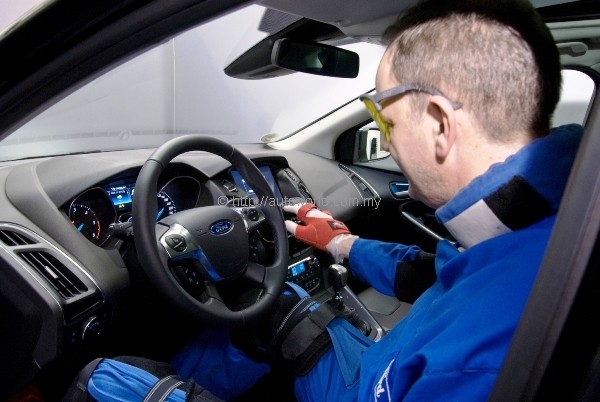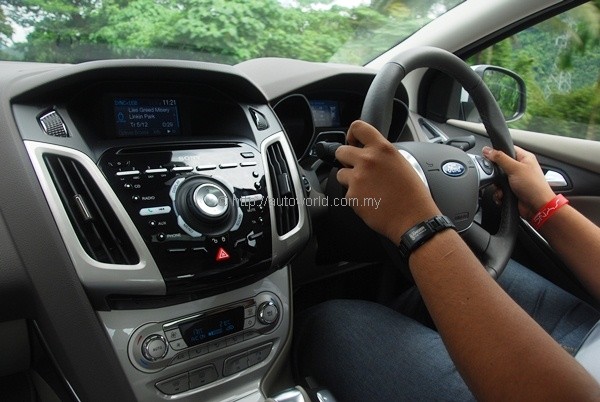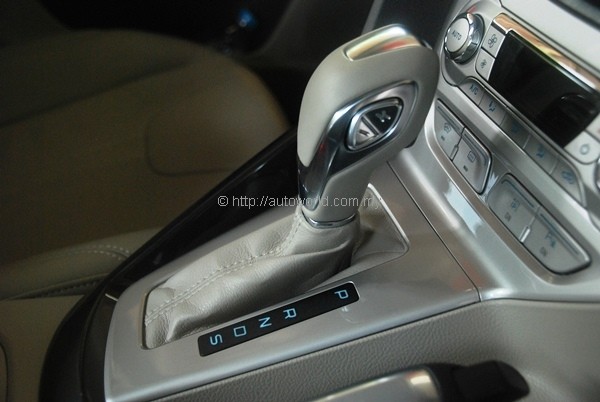Suits simulating age and pregnancy used in Ford Focus development
In our line of work reviewing cars, it is easy to pick faults, especially with regards to the vehicle’s interior – the plastics are too brittle, the switches are positioned too far, the instrument panel is not very legible, and the list of criticisms go on. For this writer, ergonomics is a particular pet peeve.
Cabin design of a car is serious business, especially when your product is mass market and caters to humans of all shapes and sizes. Unlike a T-shirt, you can’t offer your Ford Focus in S, M and L sizes. You have to essentially design a one-size-fits-all solution for a wide spectrum of people of various physical conditions.
Car makers employ various methods to ensure that their products fit the needs of as many people as possible. One of the methods used include employing control test groups – these are ordinary members of the public of various walks of life – to test actual working prototypes and give their feedback.
Having a multitude of opinions help, but nothing ever beats perspective. For example, male engineer will never understand the pains of a pregnant woman, and the growing pains of old age only hits long after he has retired. How can we expect this engineer to design a car that will really cater to the needs of these two groups of individuals?
To that end, Ford’s designers who worked on the all-new Focus have special suits that will give them a good approximation on the actual physical stresses experienced by pregnant women or the elderly. Clemens Marek was responsible for designing the ergonomics of the soon-to-arrive third generation Focus, and before he put on Ford’s Third Age Suit for the first time, he used to think he could design a car for anyone.
Describing his maiden experience with the suit, Marek said, “Like most people, when I first put it on I felt I wanted to prove that it didn’t affect me, that it’s really not that bad. But after wearing it for an hour, it really hits home. It’s stressful, tiring and a bit tedious. In fact, it’s a bit scary because it gives you a glimpse of what it will be like when you get older, but then it feels great when you take it off!”
The Third Age Suit was developed by Ford to enable ergonomics engineers to experience the effects of the ageing process and help them develop vehicles for customers who could be 30 years older than them. The suit is designed specifically to add bulk and restrict joint movements simulating the reduced mobility and flexibility of older people.
It also effectively simulates increased susceptibility of old people to fatigue and their reduced quality of vision. The suit’s added weight makes its wearer tire more quickly than usual, and special glasses can be worn to simulate a variety of sight problems ranging from cataract to tunnel vision.
Usage of the Third Age Suit dates back to the first generation Focus, and it has allowed Ford to better place the vehicle’s hip point for easy ingress and egress. Wearing the suit, engineers perform various driving tests on test tracks, and also attempt various routine tasks such as reverse parking and operating of controls.
“One of the main tests we used the suit for on the all-new Focus was finding the best location for the hazard warning indicator switch,” Marek notes.
“We wanted to make sure that an elderly driver could press it without accidentally activating the door lock switch just beside it. And we also used the gloves to help us test the buttons on the entertainment system,” he added. We are curious how the Powershift transmission’s rocker switch was able to pass this particular test.
Another suit that is used by the engineers is the Pregnancy Suit, and it is a lot more elaborate than just wearing a bag of weights over your belly. The baby’s weight is simulated by lead weights, but the suit also carries 2kg of water with a weighted pouch on the belly’s underside to simulate the foetal head resting and applying pressure on the mother’s bladder. A rib belt constricts your lungs, simulating shortness of breath. Talk about getting it real.
The Pregnancy Suit is mainly used to check the location of the seat belts, but it is also used for ingress/egress tests. It is designed to help the engineers better understand the issues pregnant women face when driving a vehicle, such as awkwardness in body movements, postural changes, shifts in centre of gravity and limitations in reach.
With tools such as the Third Age Suit and the Pregnancy Suit, Ford engineers are able to gain an understanding, and some first-hand experience, of the needs of a far larger proportion of the world’s population.
“The suits have completely changed the way we work. It makes us look at certain things a lot more closely,” observes Marek.
And pleasingly for the older folk and pregnant women, Marek says, “We automatically think of older people or pregnant drivers when developing vehicles now. We understand some of the difficulties that can come with old age or pregnancy and we think about these problems from the outset.”
Pictures: Official Ford release and AW archive.
Further Details:
– Ford Focus preliminary specifications in Malaysia
– Ford vehicle prices and specifications in Malaysia
– List of Ford official dealer and branches


























